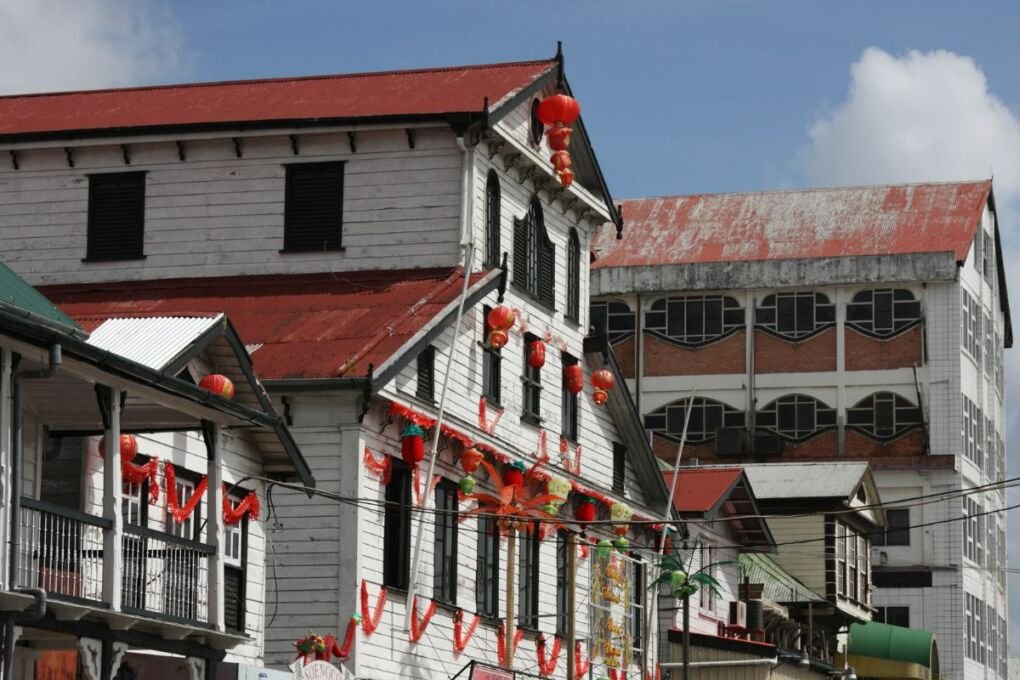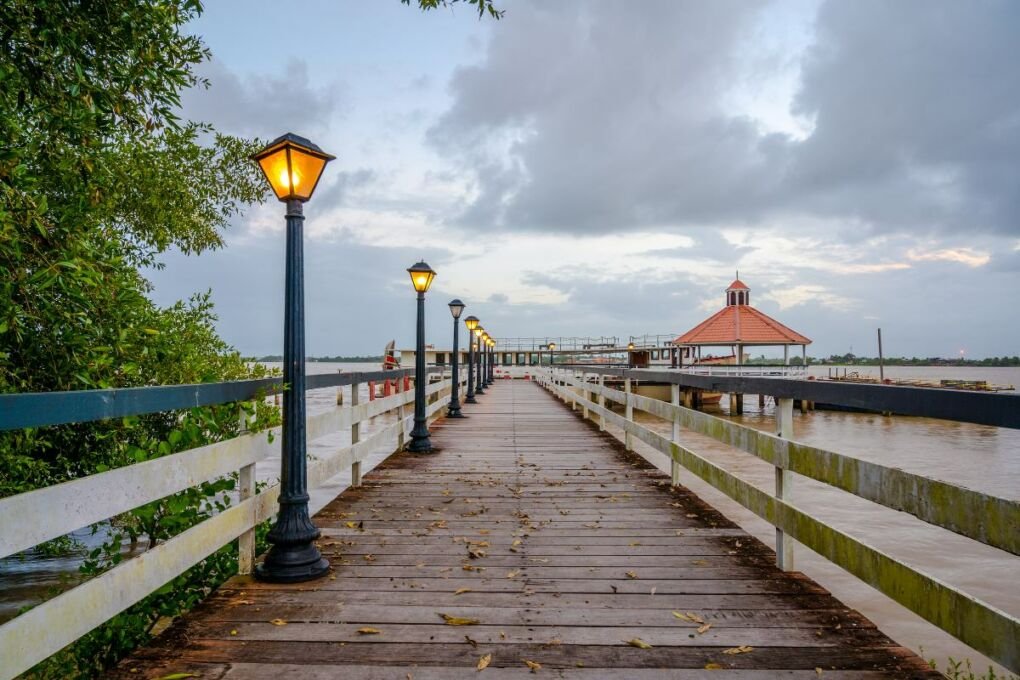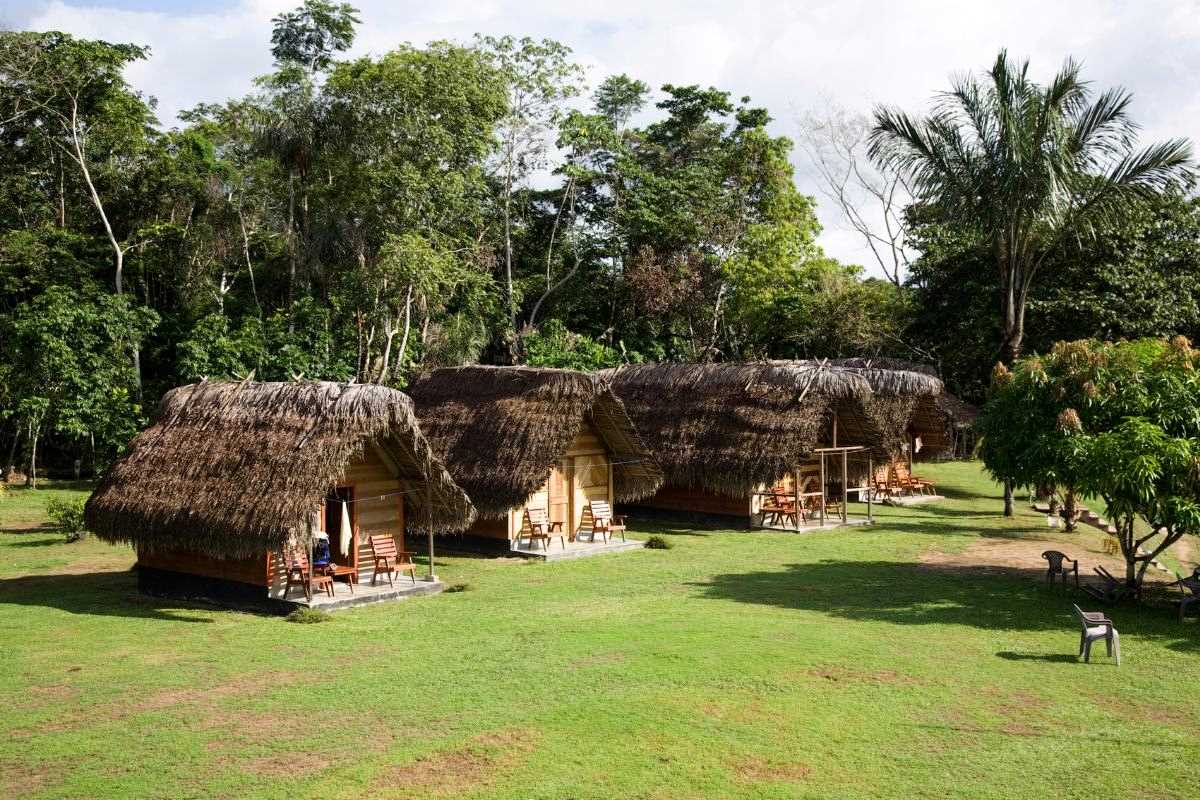Suriname is a country few travelers know about, bringing a next-level curiosity about what wonders await. Since this South American land is largely undiscovered, one pivotal question must be set straight before visiting: Is Suriname safe for tourists?
Nestled within the lush embrace of the Amazon rainforest and bordered by the Atlantic Ocean, Suriname boasts a diverse culture and breathtaking natural grandeur. This country will surely satisfy those who seek a road less traveled.
Suriname is one of South America’s best places for a safari, covered in small traditional villages and untouched landscapes of dense forests. The charming country has a lot to offer, but before you head off, there are some things you need to know to stay safe.
Why Visit Suriname?
Embarking on a journey to Suriname unlocks the secrets of an uncharted paradise that beams with cultural diversity and untouched natural beauty.
Suriname has a unique mix of cultures, including Dutch, Caribbean, Indonesian, Indian, and Chinese. They all contribute to a delightful experience of traditions, languages, and flavors. You’ll want to wander through the streets of Paramaribo, the capital, where Dutch colonial architecture sets the backdrop for bustling markets and lively street art.
You can venture into the numerous national parks like the UNESCO site Central Suriname Nature Reserve, where you can encounter numerous thriving species of flora and fauna.
Whether exploring the historical remnants of Paramaribo, cruising along the serene rivers, or participating in unique cultural celebrations — every corner of Suriname offers adventure travelers a raw, immersive experience.

Is Suriname Dangerous?
Most travel advisories say that tourists should exercise standard precautions in Suriname, meaning the country is relatively low-risk. But all things considered, the status is more medium-risk. Many travelers have experienced above-average levels of petty theft, like bag snatching and pickpocketing, which is a particular problem in urban areas and marketplaces.
Violent crime, like armed robbery, is a concern in certain areas, particularly after dark. As night falls, impoverished beggars walk around and can be pushy and sometimes dangerous. Vehicle theft is also common, which can leave you stranded. Road safety issues, insect-borne diseases, limited healthcare, and political demonstrations are also on the list of worries.
All this aside, as long as you follow safety protocols and stick to safer areas, you should be able to experience a problem-free adventure through the gorgeous Suriname.

Dangerous Areas in Suriname
Albina
Albina is a town in eastern Suriname and the capital of the Marowijne District. The area lies on the west bank of the Marowijne River, forming the border with French Guiana, across from Saint-Laurent-du-Maron.
Sadly, robberies and other crimes are of particular concern in Albina, and it’s best to avoid visiting here. The East-West highway between Albina and Paramaribo is also unsafe due to hijacking. When driving here, keep your doors locked at all times, stay alert, and you should not travel through after dark.
Brokopondo District
The Brokopondo District is located on the west shore of the Suriname River, just north of the Afobaka dam. It is 65 miles (105 kilometers) southeast of Paramaribo. Brokopondo is known for its tourism, gold mining, and cultural diversity.
Although Brokopondo specifically focuses on tourism, the entire district is one of the less safe places in Suriname. Brokopondo has increased crime levels, including violent instances like armed robbery, burglary, and carjacking. Due to criminal activity, the town of Moengo and the Afobaka Highway in the Para district should also be avoided.
Is it Safe to Live in Suriname?
If you’re seeking the best places to live in South America, here’s what to know about Suriname. The country has a low crime index of 53.03, making living there much safer than in many other countries.
Overall, petty crime and armed mugging are medium-level concerns for locals. Tourists tend to get the short end of the stick for petty crimes because they stand out. Armed muggings and robberies are common in Suriname, but luckily, murder is rare.
The main contributing factor to crime in the country is that around 70% of the population lives below the poverty line. The lack of police presence due to resource shortages also put a damper on the country’s protection services.

Safe Areas in Suriname
Rainville
Besides the Palm Garden area, Paramaribo is generally considered a safe destination. Travelers are drawn to this capital city for its historical attractions. It is a UNESCO-listed district adorned with well-preserved Dutch colonial buildings. Suriname was once a Dutch colony, and their language remains the official language — but don’t worry, English is widely spoken.
Rainville is an upper-class area and business district within the capital known for its warm and welcoming atmosphere. Locals often go out of their way to assist you. Here, you can visit the delightful park of Palmentuin, and Fort Zeelandia, built in 1640 to protect Suriname.
Waterkant
Waterkant is Paramaribo’s central tourist district and one of the safest areas in Suriname. It is the perfect place to book accommodation as it’s central to many activities while offering a few Western comforts.
The Waterkant gives you access to trendy bars, cafes, and restaurants. You can stroll along the quaint streets, admire the beautiful colonial architecture, and visit museums like the Surinaams Museum.
The nearby Central Market is perfect for finding souvenirs and local handicrafts. You can also book tours from here to explore the rest of Suriname, from boat rides to hiking adventures.
Noord
Since Paramaribo is the tourist hub, mentioning Noord, a wealthy district within the city, gives you another safe option on where to stay. Noord has a delectable street food scene, particularly in the Blauwgrond neighborhood. It is also home to several historic buildings, including the Blauwgrond Mosque, built in 1894. You’ll find a range of accommodation here, from apartment rentals to upscale hotels.

Warnings & Dangers in Suriname
The main dangers that lurk in Suriname are pickpockets and bag snatchers. The country’s impoverished state leaves locals desperate to survive, and knowing that tourists might have money makes you a target.
You should always keep your valuables, like your phone, in your bag and away from being grabbed. Try not to stand out with expensive clothing, and don’t wear jewelry and watches as they make you a bigger target.
You will notice plenty of helpful locals warning you of theft, and it helps not to be too alarmed, as they are only trying to be helpful. As long as you’re cautious, you’ll be safe.

Overall Travel Risk (6/10)
All in all, Suriname is only slightly dangerous, considering petty theft and after-dark risks. If you stick to safe areas, avoid going out at night, and use reliable transport, you mitigate almost all potential hazards.
If you want to explore Suriname’s extensive natural landscapes, get a local guide to stay safe while trekking through rugged terrain and avoid imposing on local territory. Walking around urban areas in the daytime shouldn’t be an issue if you stick to well-traveled routes.
Transport is one of the main things you need to plan before visiting, as the roads and infrastructure in Suriname aren’t well established, and some highways have hijacking risks. There are also insect-caused illnesses and occasional political demonstrations to be aware of.
Crime
Always guard your belongings to avoid unwanted run-ins with criminals. Invest in an anti-theft travel bag for extra precaution. Never walk around with your phone in hand, and don’t hang your bags on the back of your chair when in restaurants, as they will likely get grabbed.
You should always stick to daytime activities. Nighttime in Suriname is a different atmosphere entirely, with high risks of being harassed by beggars and being mugged. If your adventures run late, have reliable transport ready instead of walking around to find a taxi.
Transport
Suriname roads are full of large speed bumps, the streets are unlit, and people tend to park their cars in unexpected places. Theft and carjackings are unfortunately also common at night. When renting a vehicle, keep it locked at all times and ensure the hotel you’re staying at has a safe place to park.
Buses are the cheapest transport but aren’t always on a set schedule or well-maintained. Taxis are faster but cost more and may not have meters, so you should ask your hotel for a reliable company. Another option is collective taxis with more passengers, shared with local Surinamese people who are friendly and quick to assist travelers in need.

Healthcare
Malaria, Dengue, Chikungunya, and Zika are all insect-borne diseases that threaten your health when you visit Suriname. You’ll want to ensure you have the necessary vaccinations before visiting and take antimalarials during your stay— especially if you plan on trekking the rural parts of the country. A yellow fever vaccination is mandatory to get a Visa.
The urban areas have adequate healthcare facilities, and if you are to visit one, you will need to pay upfront. Ensuring you have sufficient travel insurance in case of emergencies is of utmost importance.
Political Demonstrations
Suriname is a nation where cultural celebrations and political protests can sometimes appear similar. If you happen upon a lively and colorful gathering, it’s best to err on the side of caution and ask someone nearby to verify what’s happening before approaching.
While Suriname is a relatively safe country, political demonstrations can occasionally turn violent. That’s why it’s essential to avoid them in case things escalate. Protests are frequent, so staying informed about the political climate before visiting is essential. When you’re there, it’s best to check with your hotel or local authorities to see if there are any ongoing protests.

Tips for Staying Safe in Suriname
Since Suriname is a medium-risk destination, these are helpful travel tips to keep in mind to help ensure your trip is secure and enjoyable:
- Don’t do any drugs: Suriname has severe penalties for drug possession and usage.
- Use indoor ATMs: Criminals tend to lurk around ATMs waiting for an opportunity, so only use them during daylight and ones that are indoors at shopping centers or banks.
- Ask permission before taking pictures: Some inland communities have beliefs against taking photos of their sacred spaces, including nature and holy buildings.
- Only use official border crossings: There are ongoing conflicts between neighboring areas of Guyana and French Guiana, and you don’t want to put yourself in a hazardous situation.
- Don’t leave valuable items visible in your car: This increases the chances of break-ins and highjacking.

Is Suriname Safe? | Frequently Asked Questions
Is Suriname Safe for Solo Travelers?
Suriname is not a popular tourist destination, particularly for those traveling alone. However, solo travelers can still enjoy the untainted beauty of Suriname by following common-sense safety measures.
One crucial step is to choose accommodations in a safe part of the city and pay a little extra for a secure hotel. It’s also essential to avoid traveling at night, even if you’re staying in a good area. Keep your valuables close to you always, and avoid attracting attention by dressing modestly.
Is Suriname Expensive?
The Suriname Dollar is relatively weak to most currencies, especially the US, so a holiday here means affordable food, accommodation, and activities. Most of your budget will go towards reliable transport and reputable tour guides.
One thing to note is that entrance to tourist attractions will likely be more costly than those in Europe or the United States. Still, considering that the country is impoverished, it helps the economy greatly.

Can You Go Out at Night in Suriname?
Suriname is especially dangerous at night. You should never go out after sunset. The streets are unlit, drivers are reckless, and many criminals are lurking around waiting for an opportunity to rob you.
There isn’t much nightlife in the country anyway, and all the worthwhile activities are best experienced in daylight. If your tour is to end late, ensure you have reliable transport ready to take you home afterward.
Is Suriname Worth Visiting?
Suriname isn’t everyone’s cup of tea, as it’s largely underdeveloped in terms of infrastructure and tourism. The country is more suited for adventure travelers who seek the raw beauty of untouched nature and the hospitality of a friendly multicultural community. On the plus side, Suriname is super affordable and has a unique charm, unlike any other country.
